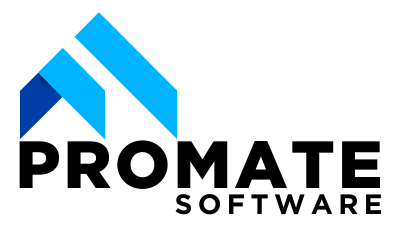FAQ
What is Earned Value Management (EVM)?
It’s a way to track cost, time, and work done to see how your project is performing.
Why use EVM?
It helps you see early if you’re running late or over budget, so you can act fast.
Is EVM only for big government jobs?
Nope. Any project with a clear budget and plan can use EVM, big or small.
What are the main EVM metrics?
CPI, SPI, CV, and SV, they help you understand cost and schedule performance.
Can EVM work in agile projects?
Yes! especially in hybrid teams. You’ll just need to adapt it a bit.
Why Earned Value Management Matters
Managing a project without tracking performance is like driving without GPS. You won’t know if you’re on track. That’s where Earned Value Management (EVM) helps.
EVM shows how much value your project has delivered, and whether you’re on time and within budget. It’s not just a budgeting tool. It brings together scope, time, and cost to give a full picture of project health.
Let’s break it down simply.
1. Planned Value (PV)
What it is: It’s basically how much work should be done so far.
Formula:
PV = % of planned work × total project budget
2. Earned Value (EV)
What it is: How much work is actually done so far.
Formula:
EV = % of completed work × total project budget
3. Actual Cost (AC)
What it is: How much you’ve actually spent so far.
Formula:
AC = Total cost incurred for the completed work
Key Performance Indicators
These tell you how things are really going.
1. Cost Variance (CV)
Measures: Budget performance.
CV = EV – AC
- Positive = under budget
- Negative = over budget
2. Schedule Variance (SV)
Measures: Schedule performance.
SV = EV – PV
- Positive = ahead of schedule
- Negative = behind schedule
3. Cost Performance Index (CPI)
Measures: Cost efficiency.
CPI = EV / AC
- CPI > 1 = performing well
- CPI < 1 = cost overrun
4. Schedule Performance Index (SPI)
Measures: Schedule efficiency.
SPI = EV / PV
- SPI > 1 = ahead of schedule
- SPI < 1 = lagging behind
5. Estimate at Completion (EAC)
Forecasts: Final project cost.
EAC = Total budget / CPI (if current CPI holds)
6. Estimate to Complete (ETC)
Estimates: Cost to finish remaining work.
ETC = EAC – AC
7. Variance at Completion (VAC)
Predicts: Budget surplus or deficit.
VAC = Total budget – EAC
Real-World Example: EVM in a Software Project
Let’s say you’re managing an app development project with a $400,000 budget and a six-month timeline.
At the 3-month mark:
- You planned to have 50% of the work done → PV = $200,000
- You’ve completed 40% of the work → EV = $160,000
- You’ve spent $210,000 so far → AC = $210,000
Now let’s crunch the numbers:
- CV = EV – AC = $160,000 – $210,000 = -$50,000 → Over budget
- SV = EV – PV = $160,000 – $200,000 = -$40,000 → Behind schedule
- CPI = EV / AC = 0.76
- SPI = EV / PV = 0.8
- EAC = $400,000 / 0.76 ≈ $526,316
- VAC = $400,000 – $526,316 = -$126,316 → Expecting a big budget overrun
The numbers make it clear: this project needs adjusting.
Why Use EVM?
Yes, it takes a little effort to set up. But the benefits are big.
1. Clarity and Visibility
It gives you a concrete view of where your project stands. Not just financially, but in terms of actual progress.
2. Early Warning System
By spotting schedule or cost issues early, you can mitigate risk and avoid last-minute surprises.
3. Improved Communication
With clear metrics like CPI and SPI, reporting to stakeholders becomes more objective and credible.
4. Better Forecasting
EVM helps you predict final costs and completion dates based on real performance data.
5. Supports Data-Driven Decisions
Instead of guessing or relying on gut feel, you’re making decisions backed by real numbers.
The Challenges of EVM
Of course, EVM isn’t without its limitations. Here’s what to watch out for:
1. Complexity and Learning Curve
It can be overwhelming for teams unfamiliar with the concepts. Training is essential for success.
2. Data Dependency
EVM only works when your scope, schedule, and cost data are accurate and up to date.
3. Limited Flexibility in Agile Environments
Traditional EVM assumes fixed baselines. In agile settings, scope evolves, so EVM must be adapted (e.g. tracking story points instead of fixed costed tasks).
4. Maintenance Effort
Setting up and maintaining an EVM system takes time, especially in large, multi-phase projects.
EVM in the Australian Project Landscape
In Australia, EVM is gaining traction not only in defence and infrastructure but also in IT, healthcare, and construction.
Relevant Standards and Frameworks
PMBOK® Guide (Project Management Institute)
Heavily referenced across Australia, especially by certified project managers (PMP®). EVM is a core technique in its cost management and performance domains.
ISO 21508:2018
Recognised in Australia via Standards Australia, this international standard defines principles and guidelines for applying EVM in project and programme management.
AIPM (Australian Institute of Project Management)
While the AIPM’s RegPM framework doesn’t prescribe EVM, it promotes integrated performance measurement. And many of its certified professionals use EVM as a best practice.
Australian Government Guidelines
In federal projects (especially through the Department of Defence’s CASG), EVM is often mandatory for large contracts. The Project Performance Management Framework (PPMF) includes provisions for tracking project cost and schedule using EVM principles.
Wrapping Up: Why EVM Belongs in Your Toolkit
EVM gives you clarity on cost, time, and progress. It’s not just about tracking where you are, but helping you steer where you’re going.
With EVM, you can:
✔ Track real progress
✔ Spot risks early
✔ Improve your decisions
✔ Gain stakeholder trust
It takes a little effort upfront. But once in place, it gives you control and confidence.
At Promate Software, we help project managers work smarter. Whether you’re building software or bridges, EVM can help you stay on track.
Want to learn more about Project Management?
Browse our blog — or better yet, start your free trial today.



